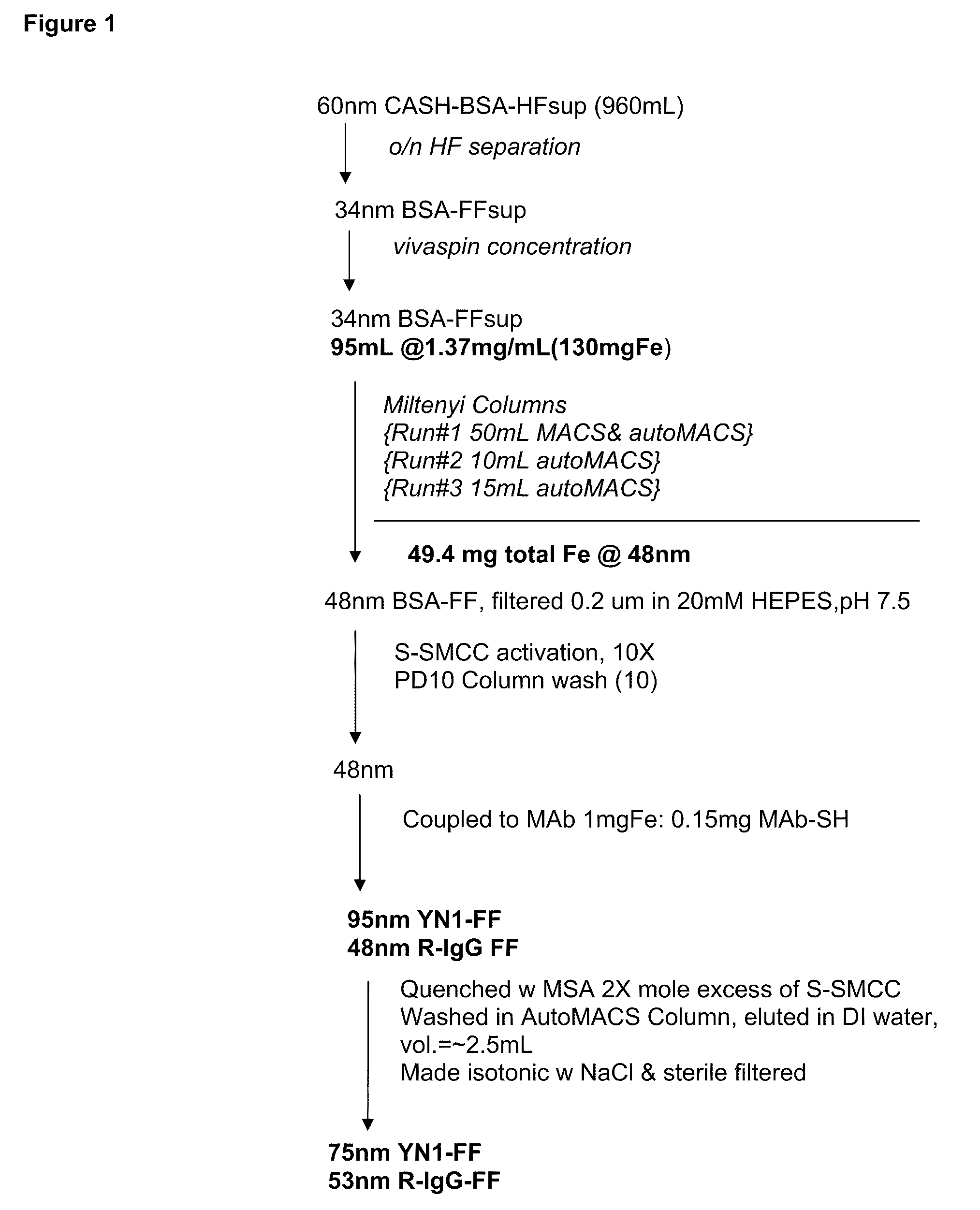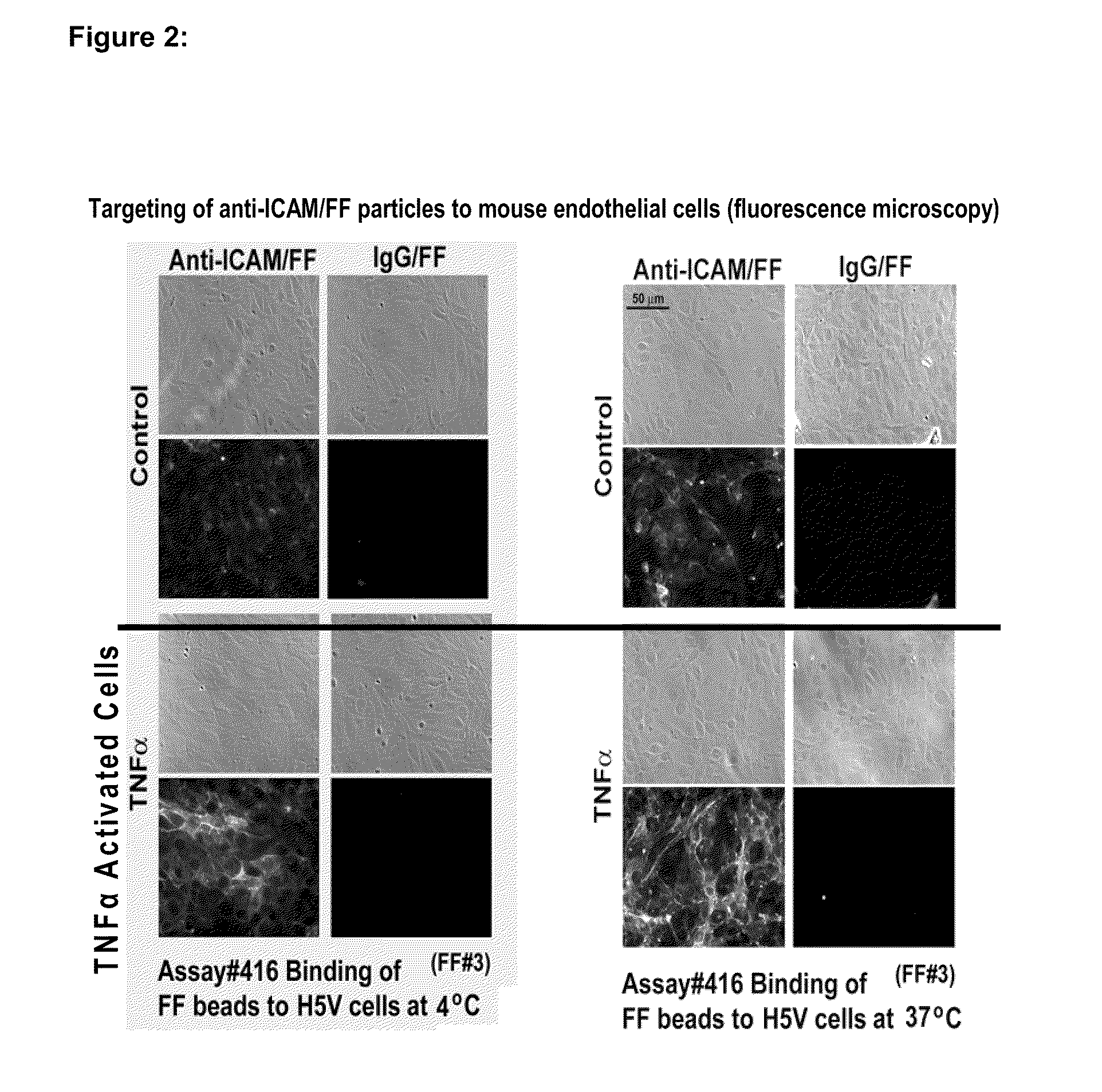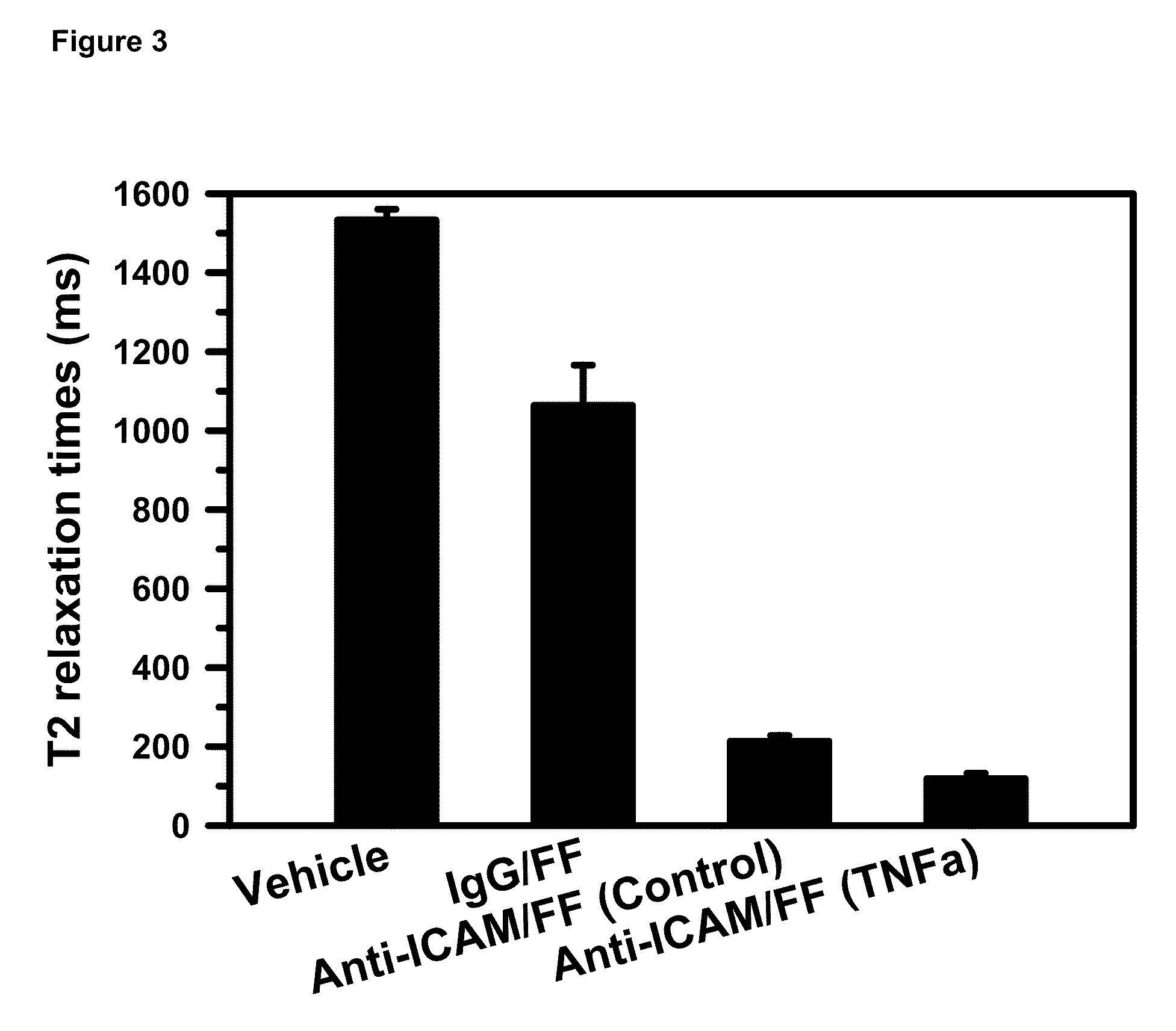Imaging of Activated Vascular Endothelium Using Immunomagnetic MRI Contrast Agents
- Summary
- Abstract
- Description
- Claims
- Application Information
AI Technical Summary
Benefits of technology
Problems solved by technology
Method used
Image
Examples
Embodiment Construction
[0035]The present invention utilizes a coated, magnetic particle comprising a nanoparticle core of magnetic material, and a base coating material on the magnetic core (U.S. Pat. No. 6,365,362). These magnetic particles are characterized by extremely low non-specific binding. The magnetic core material of the particles described may comprise at least one transition metal oxide and a suitable base coating material comprises a protein. Proteins suitable for coating magnetic particles include but are not limited to bovine serum albumin and casein. The additional coating material may be the original coating proteins or one member of a specific binding pair which is coupled to the base material on the magnetic core. Exemplary specific binding pairs include biotin-streptavidin, antigen-antibody, receptor-hormone, receptor-ligand, agonist-antagonist, lectin-carbohydrate, Protein A-antibody Fc, and avidin-biotin. The member of the specific binding pair may be coupled to the base coating mate...
PUM
| Property | Measurement | Unit |
|---|---|---|
| Diameter | aaaaa | aaaaa |
| Paramagnetism | aaaaa | aaaaa |
Abstract
Description
Claims
Application Information
 Login to View More
Login to View More - R&D
- Intellectual Property
- Life Sciences
- Materials
- Tech Scout
- Unparalleled Data Quality
- Higher Quality Content
- 60% Fewer Hallucinations
Browse by: Latest US Patents, China's latest patents, Technical Efficacy Thesaurus, Application Domain, Technology Topic, Popular Technical Reports.
© 2025 PatSnap. All rights reserved.Legal|Privacy policy|Modern Slavery Act Transparency Statement|Sitemap|About US| Contact US: help@patsnap.com



